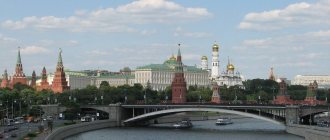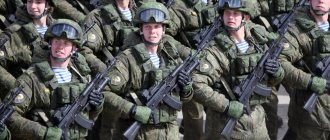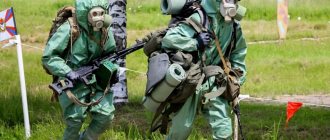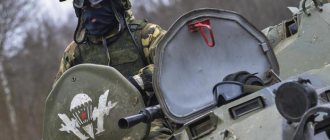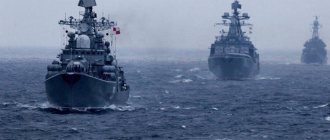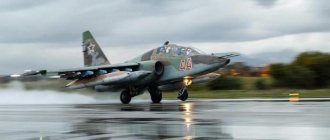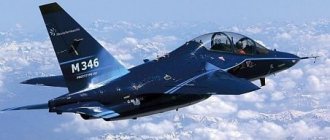No matter how they call the assassination of the 35th US President John F. Kennedy - both the biggest mystery of the 20th century and a conspiracy of the CIA and the FBI; There are dozens of different versions of who exactly shot in Dallas. There is still no final opinion about the identity of the killer.
But the chronicle of the crime is known literally minute by minute. Not only do we know exactly what happened in Dallas on November 22, 1963, but we can see it. Businessman Abraham Zapruder decided to film the passage of the presidential motorcade with a film camera, and ended up filming the murder. So the attempt was documented, and the film was immediately handed over to the special services. We will restore the picture too.
Jacqueline Kennedy and one of the president's guards immediately after the shot. Source: gazeta.ru
President's visit
So, in November 1963, Kennedy arrived in Texas. This trip was planned as part of the preparatory campaign for the 1964 presidential elections. The head of state himself noted that it was very important for him to win in Texas and Florida. In addition, Vice President Lyndon Johnson was a local native, and a trip to this state was given special significance.
But representatives of the special services were afraid of the visit. Literally a month before the president’s arrival, the US representative to the UN, Adlai Stevenson, was attacked in Dallas. Earlier, during one of Lyndon Johnson's speeches here, he was booed by a crowd of... housewives. On the eve of the president's arrival, leaflets with Kennedy's image and the words "Wanted for Treason" were posted around the city. The situation was tense, and trouble was expected. True, they thought that demonstrators would take to the streets with posters or throw rotten eggs at the president, nothing more.
Flyers posted in Dallas ahead of President Kennedy's visit. Source: rulit.me
Local authorities were more pessimistic. This is what William Manchester, a historian and journalist who wrote a chronicle of the assassination attempt at the request of the president’s family, writes in his book “The Assassination of President Kennedy”: “Federal Judge Sarah T. Hughes feared the incidents, prosecutor Barefoot Sanders, the senior-ranking Justice Department official in this part of Texas and the vice president's representative in Dallas, told Johnson's political adviser Cliff Carter that, given the political atmosphere in the city, a trip there seemed "inadvisable." City officials have been trembling in their knees since the very beginning of this trip. The wave of local hostility toward the federal government was reaching a breaking point, and they knew it.”
But the election campaign was approaching, and the presidential travel plan was not changed. On November 21, the presidential plane landed at San Antonio Airport (the second most populous city in Texas). Kennedy attended the Air Force Medical School, visited Houston, spoke at the university there, and attended a Democratic Party banquet.
The next day the President went to Dallas. With a difference of 5 minutes, first the vice president's plane arrived at Dallas Love Field airport, and then Kennedy. At approximately 11:50, the cortege of top officials moved towards the city. The Kennedys were in the limousine, which was fourth. In the same car with the President and First Lady were US Secret Service agent Roy Kellerman, Texas Governor John Connally and his wife, and agent William Greer was driving.
Description
There are legends about the IL-96: painting in Holland, luxury interior design, electronic locks in cabins and armored glass, rare works of art, interior decoration with precious stones and precious woods. And also the presence of remote control and communication systems of the Strategic Missile Forces. That is, in the event of a nuclear attack, the plane of the Russian President (see photo below) will be ready for it. The presence of special equipment is indicated by a plexiglass trench directly on the fuselage of the airliner.
If you do not rely on rumors and legends, then the Il-96 is an elegant aircraft with a harmonious appearance and noble lines, which has a high level of reliability. Over the 20 years of operation of airliners of this brand, there has not been a single accident that resulted in the death of people. Against the backdrop of numerous disasters with Airbus and Boeing, this sounds quite impressive. The main reasons for such high safety are the theory of probability (only 30 aircraft were built) and specific operation (the quality of service for aircraft in the President’s flight squad is several times higher than that of any airline). Currently, four IL-96 of various modernizations are in the service of the state. And the flagship in this series is...
Three shots
Initially, it was planned that the motorcade would go straight along Main Street - there was no need to slow down on it. But for some reason the route was changed, and the cars drove along Elm Street, where cars had to slow down. In addition, on Elm Street, the motorcade was closer to the educational literature warehouse, from where the shooting took place.
Kennedy's motorcade movement diagram. Source: libmir.com
The shots rang out at 12:30. Eyewitnesses mistook them either for the cracks of a firecracker, or for the sound of an exhaust; even the special agents did not immediately get their bearings. There were three shots in total (although even this is controversial), Kennedy was hit in the back first, the second bullet hit him in the head, and this wound became fatal. Six minutes later the motorcade arrived at the nearest hospital, and at 12:40 the president died.
The required forensic medical studies that should have been done on site were not carried out. Kennedy's body was immediately sent to Washington.
Employees of the educational literature warehouse told police that the shots were fired from their building. Based on a series of statements, an hour later, Officer Tippit attempted to detain warehouse worker Lee Harvey Oswald. He had the pistol with which he shot Tippit. As a result, Oswald was captured, but two days later he also died. He was shot by a certain Jack Ruby while the suspect was being taken out of the police station. In this way he wanted to “justify” his hometown.
Jack Ruby. Source: gazeta.ru
So, by November 24, the president was killed, and so was the main suspect. Nevertheless, in accordance with the decree of the new President Lyndon Johnson, a commission was formed, headed by Chief Justice of the US Supreme Court Earl Warren. There were seven people in total. For a long time they studied the testimony of witnesses and documents, and eventually concluded that a lone killer had attempted to assassinate the president. Jack Ruby, in their opinion, also acted alone and had purely personal motives for the murder.
Production of Russia's main aircraft: the presidential Il-96
From the “Flying Tank” to Air Force One. Over the 85 years of its history, the workshops of the Voronezh Aviation Plant have produced several legendary aircraft. During the war, the famous Il-2 attack aircraft (the designers called it the “Flying Tank”). In the late 1960s - the world's first supersonic passenger airliner Tu-144. Today the plant produces Il-96 and An-148 aircraft, as well as individual units for SSJ 100 and MS-21 aircraft. Work on the Il-112 transport aircraft has been resumed. It is the Voronezh Joint-Stock Aircraft Company (VASO) that produces the main aircraft of Russia - the presidential Il-96, better known as Air Force One.
Photos and text by Slava Stepanov
1. The decision to organize the plant was made in 1929. Until 1966, the plant had only numbered names: first No. 18, then No. 64. During the war, production lines were evacuated to Kuibyshev (now Samara); after the Victory, the plant in Voronezh was actually rebuilt.
2. Over the long years of its history, the Voronezh aircraft plant produced such aircraft as the ANT-25 (the crews of Chkalov and Gromov flew across the North Pole to the USA), the legendary Il-2 attack aircraft, the Tu-16 missile carrier, the passenger Il-86 and the first the world's supersonic airliner Tu-144.
3. VASO is the country’s only manufacturer of long-haul wide-body passenger aircraft Il-96-300.
Created at the OKB im. Ilyushin, with the direct participation of VASO, the prototype first took to the skies on September 28, 1988. The flight lasted 40 minutes.
4. Il-96 became the first Soviet long-range wide-body aircraft.
5. Modern IL-96-300 can carry up to 300 passengers. The new modification of the Il-96-400M with an extended fuselage, increased wingspan and more powerful engines can accommodate up to 435 passengers.
6. The aircraft crew consists of three people (two pilots and a flight engineer). Il-96 became the first aircraft of the Il family, the crew of which no longer included a navigator.
7. The so-called “glass” cockpit of the Il-96-300. The main array of aggregate and flight navigation information is displayed on several displays. Traditional round analog devices only duplicate information. The aircraft's avionics equipment is manufactured in Russia.
8. The wingspan of the Il-96-300 is more than 57 meters, length is 55 meters, maximum take-off weight is 250 tons, payload is 40 tons.
The maximum flight range is up to 13,500 km.
9. Il-96 takes off with the help of four PS-90A. This is a Russian turbofan engine with a maximum thrust of 16,000 kgf (produced by Perm Motor Plant OJSC).
10. It was in this workshop of the Voronezh aircraft plant that the world’s first supersonic passenger airliner Tu-144 was assembled in the second half of the 1960s. Here, in the late 1970s, the assembly of the Il-86 wide-body Airbus began.
In the photo: installation of Il-96-300 fuselages is currently underway here.
11. The diameter of the IL-96-300 fuselage is 6 meters 8 cm. This is only 42 cm less than that of the Boeing 747.
12. Drilling and cutting holes for rivets in fuselage panels.
13. Wing from an Il-96-300 aircraft.
It is difficult to say exactly how much such a wing costs, but there is definitely some truth in the well-known saying “It costs as much as an airplane wing,” because the cost of the entire Il-96-300 starts at $40 million and varies greatly depending on the purpose and configuration of a particular aircraft.
14. In 2014, VASO received a large order for the production of 14 wide-body Il-96s of various modifications until 2024. We are primarily talking about boards for government agencies. Voronezh-made aircraft are used by the Special Flight Detachment “Russia” - it serves the country’s leadership, including the President of the Russian Federation. VASO also assembles aircraft commissioned by the Ministry of Defense (in particular, a flying command post, which is popularly nicknamed the “doomsday plane”). It is also planned to create a strategic tanker based on the Il-96.
15. An-148 is a short-haul narrow-body aircraft developed at the ASTC named after. OK. Antonova (Ukraine).
16. Accommodates up to 85 passengers, flight range is about 3500 km.
17. The first production aircraft took off from the VASO airfield on July 19, 2009.
18. Today, the An-148 is operated in Russia, Ukraine and North Korea.
19. The developer estimates the global demand for the regional airliner at 500 aircraft.
20. In 2015, Ukrainian President Petro Poroshenko announced that he was choosing the An-148 as his presidential aircraft.
21. The wing of the An-148 is located above the fuselage; thanks to the large distance from the engines to the ground, the aircraft can operate even from unsuitable ground strips.
22. During the installation of the wing, weight models of the power plant are used. The mass of the yellow cube is about 1400 kg, which corresponds to the mass of the D-436-148 gas turbine engine.
23. Since 2012, Angara, based in Irkutsk, has been operating 5 An-148-100E aircraft. They repeatedly landed in Yakutia at an outside temperature of minus 49°C and with horizontal visibility of 350 meters.
24. 29 An-148 aircraft of various modifications left the VASO stocks. They are operated by SLO Rossiya and the FSB. The company is currently fulfilling an order from the Russian Ministry of Defense for the supply of 15 An-148-100E aircraft.
25. Stand layout for preliminary installation of aircraft electrical wiring.
26. The total length of electrical wiring, for example, Il-96-300 - 345 km! For comparison: from Moscow to Voronezh in a straight line is 463 km.
27. Installation of electrical equipment in the fuselage.
28. The number of VASO employees is about 5,000 people.
29. In 2013-14, the program to create the light military transport aircraft Il-112V was resumed.
In the photo: the manufacture of fuselage compartments F-1 and F-2 (nose and central) of the first prototype of the Il-112V in the VASO assembly shop.
30. Riveting of the nose compartment of the Il-112V.
The aircraft is intended to replace the veteran An-26. The developer of the Il-112V is the Aviation Complex named after. S.V. Ilyushin, final assembly is carried out at VASO.
The aircraft will be able to transport up to 6 tons of cargo (or about 40 paratroopers). Flight range is approximately 1000 km. Il-112V will be equipped with two turboprop engines.
31. The first Il-112 is planned to be lifted into the air in the summer of 2022, and the second model will be sent for static and endurance tests.
32. Serial production may begin around 2022. VASO's capacity allows it to produce 8-12 Il-112 aircraft per year.
33. MS-21 is a project of a family of medium-haul passenger aircraft developed by the Design Bureau named after. A.S. Yakovlev and the Irkut Corporation.
As part of the cooperation, VASO produces: pylons for engines, wings of the main and front landing gear and the wing-fuselage fairing, elements of the vertical and horizontal tail and other parts of the airliner. By 2022, VASO should supply kits of parts for 72 aircraft.
34. In preparation for the production of the Il-86 airbus in the late 1970s, the plant carried out a large-scale reconstruction, new assembly shops with an area of 48,000 sq.m were built, the production of parts from composite materials, mechanical processing of long workpieces and other technologies were mastered.
35.
36.
37. In 2006, VASO became part of the United Aircraft Corporation (UAC), which unites the largest airlines in Russia.
38. VASO conducts test flights of new aircraft at the Pridacha experimental airfield, located on the territory of the enterprise. All types of aircraft produced by VASO were tested at this airfield.
Also see “Production of Il-76 and Tu-204 aircraft at” and “Technology that has not become obsolete in 140 years.”
factory, production, Russia, aircraft
Under suspicion
To understand what happened next, you need to travel to New Orleans, the hometown of Lee Harvey Oswald, where he last visited in 1963. On the evening of November 22, an argument occurred between Guy Banister and Jack Martin in a local bar. Banister ran a small detective agency here, Martin worked for him. The reason for the quarrel had nothing to do with the Kennedy assassination, it was purely a production conflict. In the heat of the argument, Banister pulled out a pistol and hit Martin in the head with it several times. He shouted: “Are you going to kill me the way you killed Kennedy?”
Police officers lead Lee Harvey Oswald. Source: Wikimedia Commons
The phrase aroused suspicion. Martin, who was admitted to the hospital, was interrogated, and he said that his boss Banister knew a certain David Ferry, and he, in turn, knew Lee Harvey Oswald quite well. The victim further claimed that Ferry convinced Oswald to attack the president through hypnosis. Martin was considered not entirely normal, but in connection with the assassination of the president, the FBI pursued every theory. Ferry was also interrogated, but the case did not receive any further progress in 1963.
How security is ensured
Ensuring the security of the president is one of the most important tasks for government agencies of any country. Therefore, when creating board No. 1, many nuances are taken into account. There are several ways to make air travel safer.
The main protection for him is the high quality of the car. Domestic designers used the most durable design and installed only Russian parts on board. This helped achieve the highest safety performance that could be achieved.
The flight can also be secured by keeping the president's movements secret. The coordinates of the aircraft, route and destination are communicated to a narrow circle of people. When necessary, deliberate disinformation is used. Such measures are effective if the president may be under threat.
No orders
The main disappointment from the Il-96-400M program is the lack of confirmed orders for these aircraft. At least ATO.ru is not aware of real, rather than declarative, interest on the part of commercial carriers.
In 2022, the cost of the IL-96-300 deep modernization program was estimated at more than 53.0 billion rubles. Of these, 10.0 billion rubles were expected to be allocated for development work, 1.5 billion for the technical re-equipment of VASO and cooperative enterprises, 42.0 billion rubles. — for additional capitalization of the leasing company, which will act as the customer of these aircraft. RUB 1.32 billion As part of this program, the Russian government allocated UAC in 2018.
Yeltsinsky board number 1
For the first time, the issue of interior design was raised by the administration of President B. N. Yeltsin after his election to a high post. Before this, the tastes of state leaders were relatively undemanding; for example, L.I. Brezhnev liked to play dominoes in flight, which is why the polished table had to be frequently repaired (but not replaced). Gorbachev’s plane was also not liked by Yeltsin’s new democratic comrades-in-arms, as was the situation inside the new Il-96, and therefore the interior was ordered from Switzerland (Jet Aviation AG). The contractor Mercata Trading, which became an intermediary in this transaction, also earned a lot. Foreign designers based their design on sketches by Glazunov (not Ilya, but his son, Ivan). Inside, Russian Air Force One of that time was a model of luxury and comfort. It now has two bedrooms, a conference room (for 12 people), comfortable seats for the suite and shower stalls. But the main thing was another innovation: the plane had an entire mobile medical center, which made it possible to exercise control over the President’s health, but it left much to be desired. In Helsinki, Yeltsin was delivered to “friend Bill” in March 1997 by a new aircraft No. 1.
From Khrushchev to Yeltsin
Another thing is N.S. Khrushchev. Having become the First Secretary of the CPSU Central Committee, he assessed the government's aviation legacy, which consisted of ordinary passenger Li-2, Il-12, Il-14 and other modest twin-engine aircraft and found it too modest. In 1956, a special air squad (AON) was created, which immediately received the latest Il-18, Tu-104 and huge Tu-114. In general, the representative functions assigned to this equipment and the personnel servicing it were fully consistent with the world practice of that time, and the most important boss of the Soviet Union really needed such machines in order not to look like a “poor relative” among world leaders. In Brezhnev's times, this tradition was continued; the magnificent Il-62 airliner became a symbol of the power of the USSR. Putin's first aircraft number 1, Il-96, was given to him by Yeltsin. The plane was redesigned several times, the interior and equipment were changed, and, in the end, four new aircraft were ordered.
Development history
Engineers working at the Ilyushin design bureau developed the Il-95 aircraft back in the early 80s of the last century to serve long-term passenger flights. It was decided to use the IL-86 as the basis for the new model.
When creating an improved air transport, specialists made some changes to the basic design, as can be seen by looking at the photos. For example, the fuselage was shortened, and the length of the keel, on the contrary, was increased; the airliner was also equipped with modern avionics and a powerful power unit.
The Il-96-300 model was launched into mass production in the early 1990s, and after just a year, the airliner began serving passengers. Domestic aircraft manufacturers have built and put into operation 22 units of reliable and safe aircraft of the series in question. Moreover, one of the models of this series, Il-96 300 PU, was used for air transportation of the President of the Russian Federation.
The well-known airline, in response to the adoption of the new law, issued a statement that if duties are indeed reduced, the company is ready to buy Il-96 aircraft. The issue regarding the removal of duties was resolved, but, unfortunately, Aeroflot did not keep its promises, that is, it did not buy a large batch of aircraft.
Despite such an unpleasant incident, the Russian airliner was of great interest to potential foreign buyers. Which, however, is not surprising, because even looking through photos of the IL-96’s interior, one can notice its strengths. Buyers were no less impressed by the flight and navigation system, created using a special design that allowed pilots to control the airliner without the help of a navigator.
Russian designers decided to equip this particular model with the latest equipment:
- latest generation control system VSUP-85-4;
- the latest indicators;
- modernized electronic displays.
At the beginning of 2009, it was decided to stop production of the Il-96-300, since this model was considered unpromising. However, several airliners of this series were purchased by buyers from Cuba, and according to data, these aircraft are of domestic production and are currently used for their intended purpose.
Cabin Il-96-400
Other Features
Also on board the IL-96-300PU there are showers, a dining room, a bar, rooms for VIP guests, a mini-gym and even a portable hospital for first aid and resuscitation. To avoid the incident of 1959, when Khrushchev descended from the airliner along the fire escape, the modernized Il-96 had a built-in lower ladder. In addition, the Russian President's plane is equipped with modern PS-90A engines.
It is worth noting that the liner was built in Voronezh on special order. For the interior decoration of the Il-96, the best jewelers from the city of Zlatoust were invited. They decorated the salon with engravings on historical themes, which were embroidered by masters of the Pavlovo Posad silk factory. Specialists were involved in the technical arrangement and layout of the aircraft's premises. The interior is dominated by light colors and three colors of the Russian flag.
Distinctive characteristics
When developing the Il-96-400M model, Russian engineers made many changes to the previously created air transport model, making the new aircraft strikingly different from many aircraft created by other airlines:
Many military units became interested in the model in question, classifying it as a tanker aircraft. This model is equipped with additional fuel tanks, which are located in the fuselage compartment. If necessary, an additional fuel system is simply connected to the main one, and its capacity allows you to additionally transport about 62 tons of fuel. This model is considered as a “two in one”, because if the services of a tanker are not required, the aircraft can quite easily be converted into a regular air transport
Moreover, the modifications will not affect the range that the aircraft of the new model range can cover. It is equally important to note the second feature of the IL-96 - the safety of air travel. During the tests, the pilot was able to land the plane without damage according to the usual landing pattern, on which all 4 power units were specially turned off.
Not every air transport created by the hands of the world's most famous aircraft manufacturers can boast of such features.
Technical characteristics of the modernized model Il-96-400 and 96-400M:
The aircraft can accommodate 435 passengers. To take off, the plane requires a 2,600-meter runway.
Technical characteristics and features of board No. 1
Russia is one of the few countries that can afford to completely create an airplane for the president on their own thanks to its developed aviation industry.
The developer of the airliner is the Ilyushin Aviation Complex. The Il-96-300 model, which became the base for aircraft No. 1, has a take-off weight of 250 tons and is capable of reaching speeds exceeding 900 kilometers per hour. The non-stop flight range exceeds nine thousand kilometers - but this is an indicator of production models. It is not known how long Putin’s plane can survive in the air without landing. Information is classified for security purposes. Size
- Wingspan: 60.1 meters;
- Area – 391.6 square meters;
- The length of the aircraft is 55.35 meters;
- Height – 17.57 meters;
- Fuselage diameter – 6.08 meters;
- The length of the passenger cabin is 41 meters;
- Maximum width – 5.7 meters;
- Maximum height – 2.61 meters;
- Volume – 350 cubic meters.
